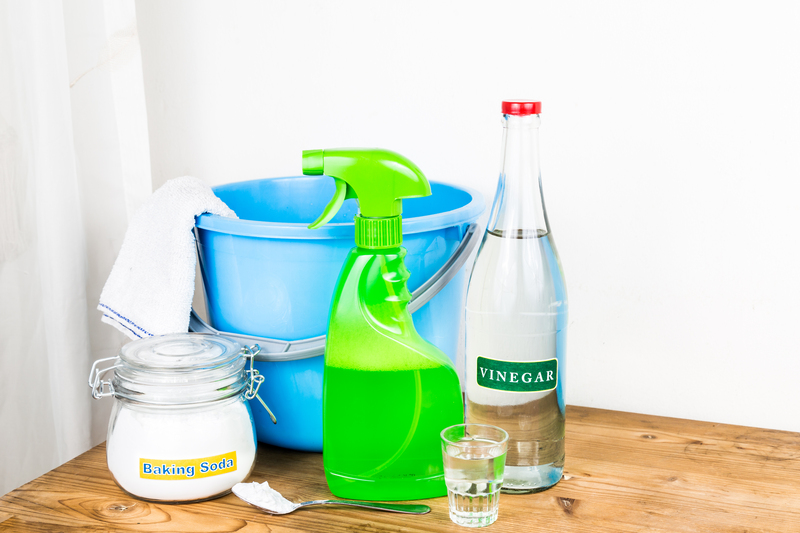Clearing Calcium Buildup
Posted on 13/10/2024
Calcium buildup is a common problem that can affect everything from household appliances to our plumbing systems and even our own bodies. This phenomenon is primarily caused by the precipitation of calcium salts, most commonly calcium carbonate (CaCO3) and calcium sulfate (CaSO4), from hard water. As water evaporates, it leaves behind these calcium salts, leading to crusty deposits known as scale or limescale. In this article, we'll explore multiple aspects of calcium buildup, including its causes, effects, and methods for clearing it.
Causes of Calcium Buildup
Understanding the root causes of calcium buildup is essential for effective prevention and treatment. The primary source is hard water, which contains high levels of calcium and magnesium ions. When hard water is heated or evaporates, the calcium and magnesium precipitate out of the solution and form solid deposits.
Various household activities that involve heating or evaporating water, such as boiling, washing, or even using humidifiers, can cause calcium buildup. Additionally, the geographical location plays a significant role, as areas with naturally hard water are more susceptible to these types of deposits.

Effects of Calcium Buildup
Calcium buildup can have multiple detrimental effects on both household appliances and plumbing systems:
- Reduced Efficiency: Appliances like water heaters, kettles, and coffee makers become less efficient as the scale builds up, leading to higher energy consumption and longer operation times.
- Clogs and Blockages: Pipes and faucets can become clogged, reducing water flow and leading to potential leaks and water damage.
- Damage to Appliances: The buildup can lead to premature wear and tear, ultimately causing breakdowns and the need for costly repairs or replacements.
- Health Concerns: In severe cases, buildup can affect the taste of water and even harbor bacteria, posing a risk to health.
General Methods for Clearing Calcium Buildup
There are several methods available for clearing calcium buildup, each with its benefits and limitations. Below are some of the most common approaches:
Chemical Cleaners
Chemical cleaners, such as those containing acids like vinegar, citric acid, or commercial descaling solutions, are popular for their effectiveness in dissolving calcium deposits. These options generally involve soaking the affected area in the solution and scrubbing off the softened deposits:
- Vinegar: White vinegar is a readily available and cost-effective option. Fill the affected appliance or submerge the specific part in vinegar for several hours, then scrub and rinse thoroughly.
- Citric Acid: Similar to vinegar, citric acid can be used to dissolve limescale. It is particularly effective for kettles and coffee machines.
- Commercial Descalers: These products are specifically designed for limescale removal and often work more quickly than household acids. However, they can be more expensive and contain harsher chemicals.
Mechanical Methods
In some cases, physical removal of calcium deposits is necessary, especially for stubborn buildup. This can involve using tools like scrapers, wire brushes, or sandpaper to manually remove the deposits. Additionally, ultrasonic cleaners that use high-frequency sound waves can help dislodge particles from hard-to-reach areas.
Water Softeners
Installing a water softener can be a proactive solution, particularly in areas with hard water. Water softeners work by replacing calcium and magnesium ions with sodium or potassium ions, reducing the likelihood of scale formation.
Preventive Measures
To limit the recurrence of calcium buildup, consider these preventive measures:
- Regular Maintenance: Routinely clean appliances and plumbing systems to prevent buildup.
- Water Treatment: Use water treatment solutions or filters to reduce water hardness.
- Temperature Control: Minimize the use of excessively hot water, which can accelerate the formation of limescale.
Specific Strategies for Appliance Care
Different household appliances suffer from calcium buildup in various ways, necessitating tailored strategies for each:
Coffee Makers and Kettles
Fill the water reservoir with equal parts water and vinegar, then run a brewing cycle (or boil, in the case of a kettle). Repeat the process several times with clean water to remove any vinegar residue. This should be done monthly to keep your appliances in top condition.
Dishwashers and Washing Machines
Using a commercial descaler or vinegar, run an empty cycle with hot water to dissolve any calcium deposits. Doing this every few months can greatly extend the lifespan of these appliances.
Water Heaters
Drain the tank and flush it to remove sediment and scale buildup. This should be done once or twice a year. In cases of severe buildup, consult a professional for a more thorough cleaning.
Dealing with Calcium Buildup in Plumbing
Calcium buildup in pipes and faucets can lead to serious plumbing issues if not addressed promptly:
Pipes
Mechanical cleaning with plumbing snakes or water jet systems can help clear out built-up scale. In extreme cases, chemical treatments may be necessary, but these should be used with caution to avoid damaging the pipes.
Faucets
Soak clogged aerators or showerheads in vinegar for several hours, then scrub off the deposits. For more stubborn buildup, dismantling the faucet and using specialized tools may be required.

Reducing Calcium Buildup in the Body
While most commonly discussed in relation to domestic systems, calcium buildup can also occur within the human body, primarily in the form of kidney stones or calcification in soft tissues.
Kidney Stones
Kidney stones can form when there is an excessive concentration of calcium oxalate in the urine. Strategies to reduce the risk include:
- Hydration: Drink plenty of fluids to dilute urine and reduce the chances of stone formation.
- Dietary Changes: Limiting foods high in oxalates (such as spinach and nuts) and reducing salt and animal protein intake can help manage calcium levels in the body.
- Medications: In some cases, doctors may prescribe medications to alter urine composition and prevent stones from forming.
Calcium in Soft Tissues
Soft tissue calcification can occur due to various health conditions, including hypercalcemia and chronic kidney disease. Managing these conditions often involves a combination of medication, dietary adjustments, and lifestyle changes to regulate calcium levels in the body.
Conclusion
Calcium buildup is an issue that affects multiple facets of daily life, from household maintenance to personal health. By understanding the causes and impacts, as well as applying effective strategies for removal and prevention, you can minimize the negative consequences associated with calcium deposits. Regular maintenance, combined with targeted treatments, can keep your appliances and plumbing systems running efficiently, while proactive health measures can reduce the risks of calcification in the body.




